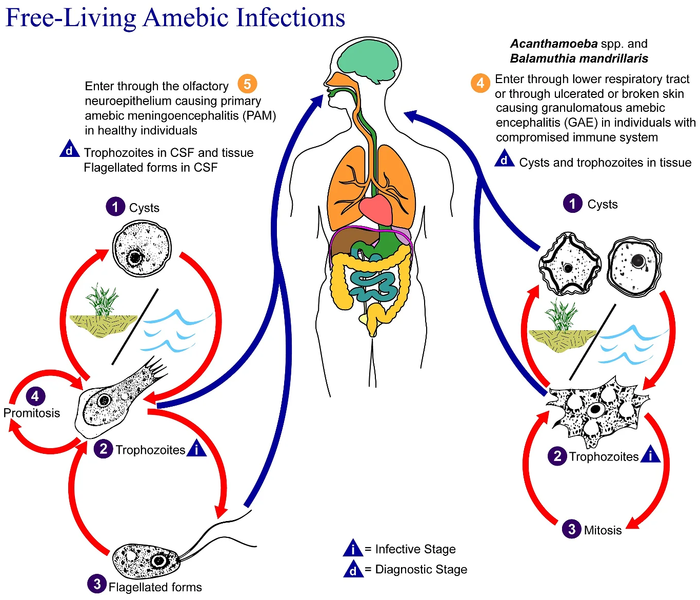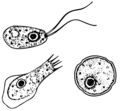Fitxategi:Free-living amebic infections.png

Aurreikuspen honen neurria: 700 × 600 pixel. Bestelako bereizmenak: 280 × 240 pixel | 560 × 480 pixel | 896 × 768 pixel | 1.195 × 1.024 pixel | 1.365 × 1.170 pixel.
Bereizmen handikoa ((1.365 × 1.170 pixel, fitxategiaren tamaina: 715 KB, MIME mota: image/png))
Fitxategiaren historia
Data/orduan klik egin fitxategiak orduan zuen itxura ikusteko.
| Data/Ordua | Iruditxoa | Neurriak | Erabiltzailea | Iruzkina | |
|---|---|---|---|---|---|
| oraingoa | 11:24, 2 otsaila 2023 |  | 1.365 × 1.170 (715 KB) | Materialscientist | https://answersingenesis.org/biology/microbiology/the-genesis-of-brain-eating-amoeba/ |
| 08:30, 20 uztaila 2008 |  | 518 × 435 (31 KB) | Optigan13 | {{Information |Description={{en|This is an illustration of the life cycle of the parasitic agents responsible for causing “free-living” amebic infections. For a complete description of the life cycle of these parasites, select the link below the image |
Irudira dakarten loturak
Ez dago fitxategi hau darabilen orririk.
Fitxategiaren erabilera orokorra
Hurrengo beste wikiek fitxategi hau darabilte:
- de.wikibooks.org proiektuan duen erabilera
- en.wiktionary.org proiektuan duen erabilera
- fi.wikipedia.org proiektuan duen erabilera
- fr.wikipedia.org proiektuan duen erabilera
- gl.wikipedia.org proiektuan duen erabilera
- hr.wikipedia.org proiektuan duen erabilera
- is.wikipedia.org proiektuan duen erabilera
- it.wikipedia.org proiektuan duen erabilera
- pl.wikipedia.org proiektuan duen erabilera
- te.wikipedia.org proiektuan duen erabilera
- vi.wikipedia.org proiektuan duen erabilera
- www.wikidata.org proiektuan duen erabilera
- zh.wikipedia.org proiektuan duen erabilera





